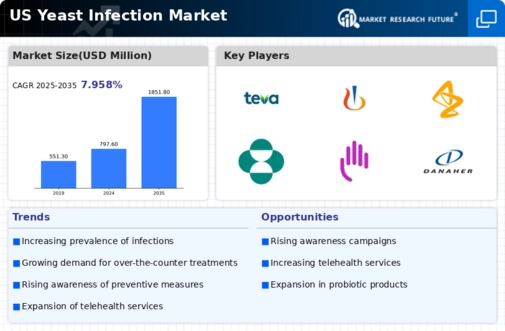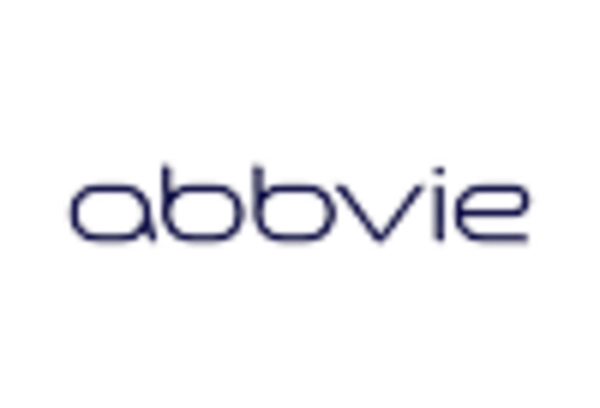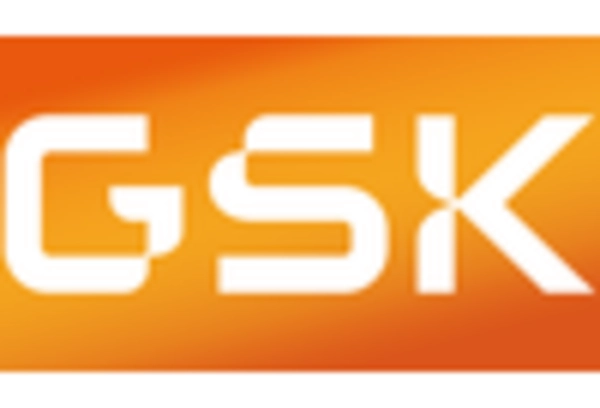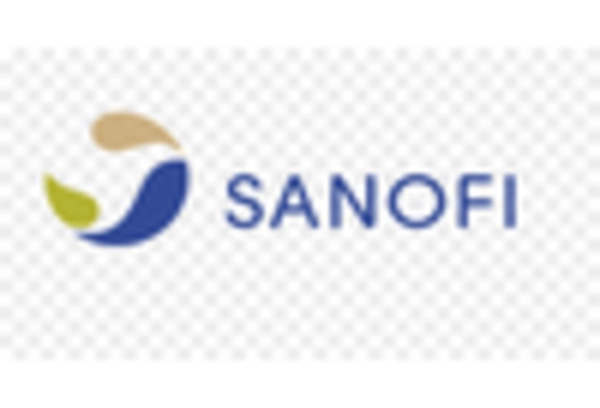Rising Healthcare Expenditure
The yeast infection market is positively influenced by the rising healthcare expenditure in the United States. As individuals allocate more resources towards healthcare, there is a corresponding increase in spending on medications and treatments for yeast infections. Recent statistics indicate that healthcare spending in the US is projected to reach $6 trillion by 2027, which may enhance access to antifungal treatments and related healthcare services. This increase in expenditure could lead to a more competitive market environment, encouraging innovation and the introduction of new products in the yeast infection market.
Advancements in Treatment Options
The yeast infection market benefits from advancements in treatment options, including the development of new antifungal medications and innovative delivery systems. Recent studies indicate that the market for antifungal drugs is projected to reach $13 billion by 2026, reflecting a robust demand for effective treatments. These advancements not only improve patient outcomes but also enhance the overall market landscape. Additionally, the introduction of combination therapies and personalized medicine approaches may provide more effective solutions for patients, thereby expanding the yeast infection market. As healthcare providers increasingly adopt these new treatments, the market is likely to witness significant growth.
Impact of Digital Health Solutions
The yeast infection market is increasingly shaped by the impact of digital health solutions, including telemedicine and mobile health applications. These technologies facilitate easier access to healthcare professionals and enable patients to receive timely advice and prescriptions for yeast infections. The rise of telehealth services has been notable, with a reported increase of 154% in telehealth visits in recent years. This trend suggests that patients are more likely to seek treatment for yeast infections, thereby driving demand in the yeast infection market. As digital health solutions continue to evolve, they may further enhance patient engagement and treatment adherence.
Growing Demand for Natural Remedies
The yeast infection market is witnessing a notable shift towards natural remedies and alternative treatments. Many consumers are becoming more health-conscious and are seeking holistic approaches to manage yeast infections. This trend is reflected in the increasing sales of probiotic supplements and herbal products, which are believed to support vaginal health. Market data suggests that the natural remedies segment is expected to grow at a CAGR of 8% over the next five years. This growing demand for natural solutions may lead to the introduction of new products, thereby diversifying the yeast infection market and catering to a broader audience.
Increasing Incidence of Yeast Infections
The yeast infection market experiences growth due to the rising incidence of yeast infections among various demographics. Factors such as hormonal changes, antibiotic use, and lifestyle choices contribute to this increase. According to recent data, approximately 75% of women will experience at least one yeast infection in their lifetime, indicating a substantial target population for treatment options. This trend suggests a growing demand for antifungal medications and over-the-counter products, thereby driving the yeast infection market. Furthermore, the increasing awareness of yeast infections and their symptoms encourages individuals to seek medical advice, further propelling market growth.

















Leave a Comment